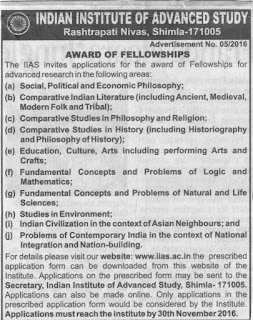Dairy Sector in India: Opportunities in Key States and Products
by Netherlands Embassy in New Delhi and YES Bank, October 2016.
MessageOver the past 50 years, the diary sector in the Netherlands has seen incredible transformation. In the 1960s, the average dairy-producing farm had approximately 9 cows, which is quite similar to the current situation in many parts of India. The two decades thereafter saw a shift from mixed farming to specialized farming; which continues to this day. As a result of this farm intensification, the average Dutch dairy farm has approximately 70 animals today; a staggering increase of more than 630%!Factors such as mechanization and the high use of inputs such as fertilizers and feed have all played their role in this astounding transformation.
The dairy sector in the Netherlands is the story of self-organization, accepting challenges, adapting to the need of the market and a dramatic transformation in a single generation. The so-called 'Approach of the Netherlands' where the private sector, Government, and research institutes work together on innovative solutions.
Whilst the increase in productivity has been an important factor in the Dutch dairy industry, sustainably increasing production is of even greater importance. The mantra of the Sustainable Dairy Chain goes "If you can't measure it you can't manage it." The different stakeholders of the Sustainable Dairy Chain emphasize the following goals: the Dutch dairy chain targets a 20% reduction in greenhouses gases by 2020, the improvement in livestock health and welfare, preservation of grazing, and the protecting biodiversity and the environment. All are goals that the stakeholders strive to attain to ensure the Dairy Chain becomes more sustainable.
The Indian dairy sector is very diverse and at the same time, is at different stages of development in different parts of the country. India has some very well organized co-operatives, foreign and domestic companies. How they develop their supply chains and product lines varies from player to player. Then there are also the government organizations which have their own programs for small scale farmers. All have their different challenges.
This study is a joint effort of the Agriculture Department of the Embassy of Kingdom of the Netherlands, New Delhi and Yes Bank reflecting on the recent developments that have undergone in the sector of dairy focusing on states like Uttar Pradesh, Andhra Pradesh & Telangana and Maharashtra.
I congratulate YES BANK for their dedicated efforts in bringing out this volume whose work shaped this piece. We have no doubt it will be useful to policy analysts, policymakers, the research & development community at large. This study will also help to achieve commercial success by collaborating on mutually identified development projects & will contribute to respective bilateral goals for both India and Netherlands.
Wouter Verhey | Agricultural Counsellor | Netherlands Embassy in New Delhi
ForewordIndia is the world's largest dairy producer, with 156 Mn MT of annual milk production, contributing over 18 % of global production. Dairy is Indian agriculture's single largest sub sector in value terms, generating annual revenue of over USD 70 Bn. Demographic dividend, changing lifestyle patterns, rise in disposable incomes, structural food habit changes and improved health consciousness are key growth drivers fuelling development of the dairy industry in India.
Multiple opportunities exist in India, across the post-production dairy value chain, in areas of storage, procurement, processing and packaging technologies. These opportunities offer tremendous scope for technology suppliers, processors and service providers to tap into one of the world's largest dairy markets. While, at the backend, private and cooperative dairy processors are actively investing in procurement infrastructure for consistent availability of good quality milk, at the front, the industry is rapidly diversifying into high-margin, value-added dairy products such as cheese, Ultra High Temperature (UHT) milk, ice cream and flavoured milk.
This YES BANK - Embassy of the Kingdom of Netherlands study 'Dairy Sector in India: Opportunities in Key States and Products' provides an in-depth overview of the Indian dairy market and captures key potential opportunities across the post-harvest dairy value chain, both in terms of geographical as well as product-based opportunities. Additionally, the study profiles the milk production scenario, value chain structure, processing infrastructure scenario as well as recent developments and opportunities in key States of Uttar Pradesh, Andhra Pradesh, Telangana and Maharashtra. On the product front, cheese and UHT milk have been profiled in detail across market opportunity, competitive landscaping, products variants, key trends & key product technology suppliers fronts.
I am confident that the study will be of immense value to the Dutch dairy industry in recognizing the vast potential of India's dairy market, thereby enabling strong partnership opportunities between India and the Netherlands in the sector.
Sincerely,
Rana Kapoor | Managing Director & CEO YES Bank | Chairman, YES Institute
Table of ContentsExecutive Summary
Overview of Dairy Industry in India
Dairy Industry Scenario in Selected States
Assessment of Selected Products
Cheese & Ultra High Temperature (UHT) Milk









